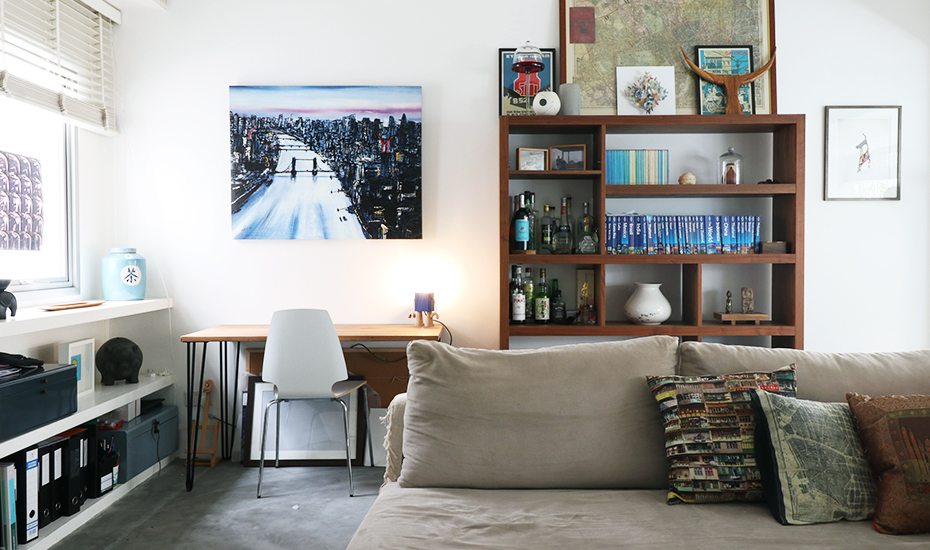
Times Square. July 16, 1979.
6sqft’s series The Urban Lens invites artists to share work exploring a theme or a place within New York City. In this installment, Philip Ashforth Coppola shares some of the sketches from his life-long “Silver Connections” subway drawings. Are you an artist who’d like to see your work featured on The Urban Lens? Get in touch with us at tips@6sqft.com.
Despite its functional woes, the subway is absolutely teeming with historic art, from tile mosaics of station names to ornamental ceiling wreaths and wrought iron handrails. Philip Ashforth Coppola has committed himself to paying homage to these details often looked over by rushed straphangers, drawing the designs with meticulous care and attention. For the past 40 years, he’s been on a mission to draw every subway station in New York City. Though he’s not there quite yet, his amazing work has been compiled into a series of volumes called “Silver Connections.” Ahead, Philip shares some of his drawings and discusses why he started the project, how he goes about his work, and his thoughts on the subway past and present.

Essex Street. March 17, 2003
What inspired you to start this project?
Two sparks of impetus. The first was my father, who told me when I was about eight years old, that down in the NYC subway, some of the stations displayed pictures of old New York buildings of about a century ago. I thought that was intriguing and curious. I filed that away in the back of my mind as I went on about my education, my stint at RISD, my few years of adventures washing dishes and hitchhiking, until I came home again, settled into a job, and then decided, one day, to finally check out what my father was talking about.
The second “spark” was Cortlandt Street and Bowling Green. Both of those stations, in the mid-1970’s, had lost their original appearance. Bowling Green had already been enlarged and its walls covered with glazed red brick-shaped tiles. It had lost its unique name panels and “oriental rug” or tapestry panels. Cortlandt Street, meanwhile, was still (in August 1978) in the process of losing its hexagonal ferry boat tiles and Dual Contracts mosaic band, preparatory to its final covering of glazed beige brick tiles. These two examples compelled me to start a record of the subway stations’ original decor before more of it was lost to renovation.

33rd Street Eagle. April 19, 1979
When did you officially begin?
Officially, on July 1st, 1978. Unofficially, in August, 1977, when, to try out my idea to find the pictures my father told me about, I went to the subway station I was most familiar with by that time – the IND West 4th Street hub – and, armed with the “plumber’s pipe” schematic subway map available at that time, dutifully traced all the A B C D E & F routes throughout Manhattan until I’d written up notes on every one of them. I didn’t know anything about NYC’s transit history then. So, the next summer, I decided to do it right, and went to the New York Public Library, to find the beginning, the pictures, and the designer of the decor.

96th Street. August 31, 1980.
Which piece of subway art did you draw first?
For the mosaic piece, the 23rd Street name panel, of the IRT Lexington/Park Avenue line. For a faience piece, the back-to-back “BB” square panels in the Brooklyn Bridge station’s mezzanine. And for a pictorial plaque, the Astor Place beaver.

116th Street Columbia University. October 23, 1980.
Have you been to any of the abandoned stations, like the lower level of Bergen?
Yes – some years ago I took a TA tour of the City Hall station and took photos. Trains pass through screeching loudly, as everyone knows. For an abandoned station, it seemed to me that the Guastavino tiled walls were in pretty clean shape. I’ve also been on the lower level (corridor only) at Nevins Street in the mid-1980’s. Can’t get down there now, I believe. I’d be happy to tour the Worth Street, 18th, 91st, Fourth Avenue, and Myrtle Avenue stations some fine day.

Nevins Street. October 7, 1994.
Which mosaics are most challenging?
The Dual Contracts (1914-1920) mosaics. They are patterned in a mix of several colors, and that requires deft shading to approximate the mix in the large fields. The Contract 1 (1904-08) mosaic bands and frames, by comparison, are, for 90% of the examples, all one color, and so their coloring has been really simple to indicate.

Bleecker Street. October 27, 1978.
How has the increase in riders and decrease crime on the subway changed your experience drawing the underground art?
Any decrease in danger in the subway – or anywhere – is a benefit to us all and increases a pleasant habitat to live in. Actually, my visits to the subway are mainly on weekends, so I am spared the incredible AM and PM mash hours on the underground. I visited one reporter, when he was still at the NY Times, on a rare weekday morning in the city, and I couldn’t believe the tide of people rushing downtown at me as I struggled to advance uptown.
Lucky for me, though, I usually don’t have to be somewhere in the exact next minute, so I can wait for another train without much anxiety. I make way for the commuters, as they pour out of a train; I don’t want to be in anyone’s way, and I keep a low profile so I can continue my examination without calling attention to myself and being questioned by the transit personnel.

Bleecker Street. October 27, 1978.
What do you think of the art in the new 2nd Avenue stations?
I’ve only visited one so far, and that was at 63rd and Third. My impression of the art is that it is huge and totally different from the civic art of the last century. I feel it would be difficult for me to contain it in a drawing; I’d probably describe it in text instead. But I haven’t got that far yet, anyway.

Borough Hall. December 30, 1993.
Adam Chang’s “NY Train Project” – what do you think?
Just took a look at the article. His craftsmanship is amazing – I can only imagine the patience he has building up those digital particles to form the subway designs – both square tiles and patterned mosaics. The illustrations of Nevins Street and Borough Hall and 39th Street are like needlepoint. The colors are delightful. I’ve known of people who render the subway stations in oil paints, and one lady who did rubbings, then I do my black-and-whites, and here is a computer whiz doing the same as the rest of us, but in computer-generated images. Looks like he has a long way to go, like me.

3rd Ave Cartouche. July 29, 1993.
Is there any lost subway art that you’re aware of but have not been able to find photos of?
The Brooklyn Bridge eagles. I should like to see a color photo of them. But since I don’t know the complete system, I can’t say what else I’m missing.

Columbus Circle 59th Street. August 24, 1979.
How do you keep track of the mosaics you’ve drawn?
Whatever I’ve drawn I’ve published in my books, and of course, I have all my drawings here with me (except those which are now on display at the New York Transit Museum). I complete examining one system route at a time, so there’s no skipping around from one route to another, and so I can keep an orderly accounting of where I’ve been and what I am finished with.

181st Street Ceiling Wreath. January 28, 1982.
You’re a life-long NJ resident – why don’t you move to NYC, which would be far more convenient for this project?
Yes, you’re right; I’m aware that the subway is changing here or there, most weeks of the year – and I don’t know what I’m missing, month by month, so it would be so much better if I lived in NYC. Then I could take an excursion on whatever line I felt or knew needed some examination at that moment. Otherwise, I have a suspicion that I’ve missed a lot – and that’s probably true. And these days, I get into the city far less frequently than when I started out on this journey. But I’m comfortable in my condo here, happily surrounded by many things that I like, and I’m almost retired.
So I am staying in the state of my birth, and hopefully, aided by friends with info and the news station, I’ll keep abreast of changes as best as I can while pursuing the subway’s past. I’m up to 1908, and presently examining the IRT Lexington Ave. (1918) line, with my next projects on the Sea Beach (rebuilt 1915) and the 14th Street Crosstown lines (L train; 1924-28) in sight.
+++

Philip’s work is currently on view to the public at the New York Transit Museum’s Grand Central Gallery Annex & Store through June 24.
All sketches by © Philip Ashforth Coppola. Courtesy of the New York Transit Museum



















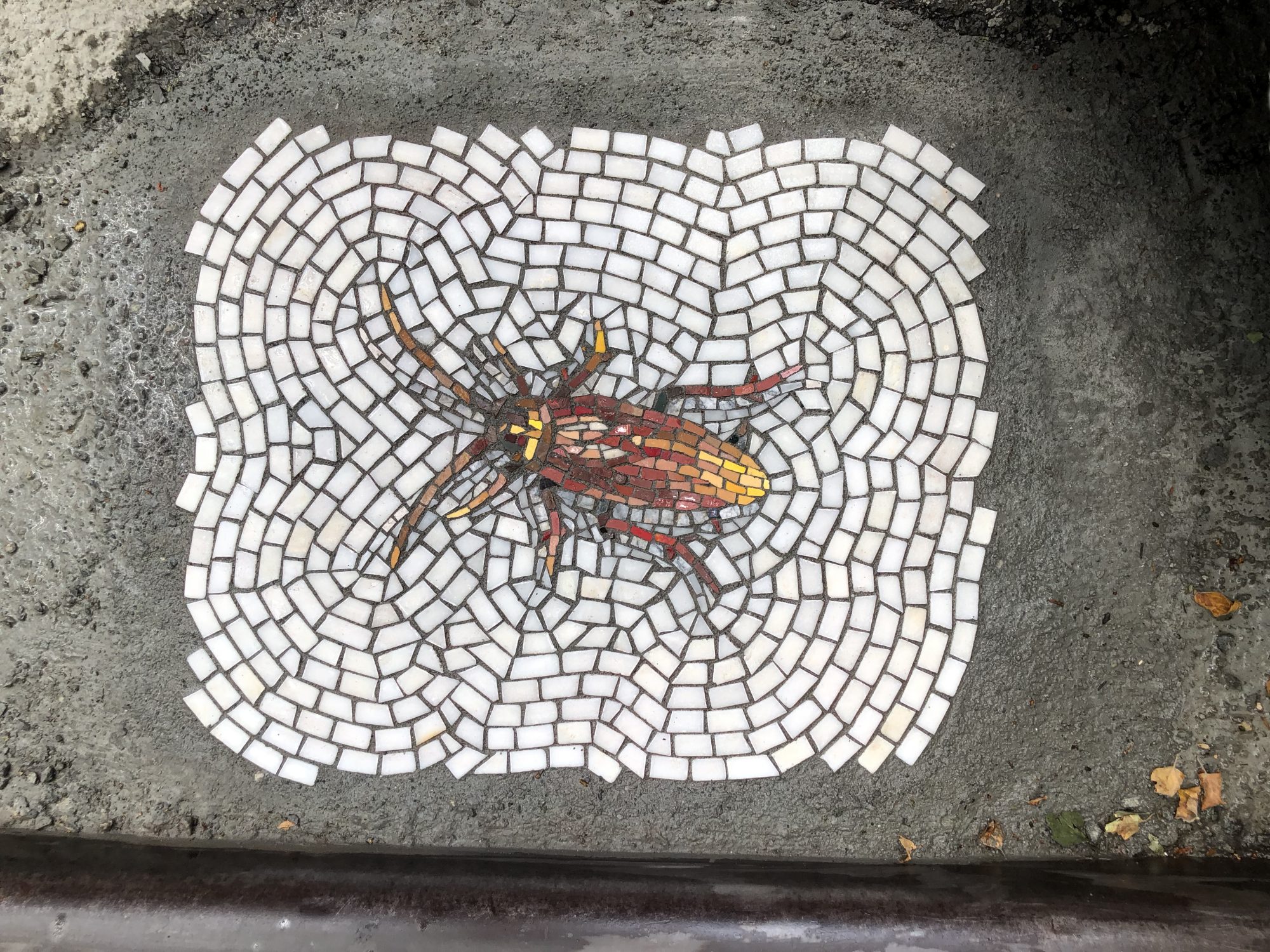








 Amy and Charlie
Amy and Charlie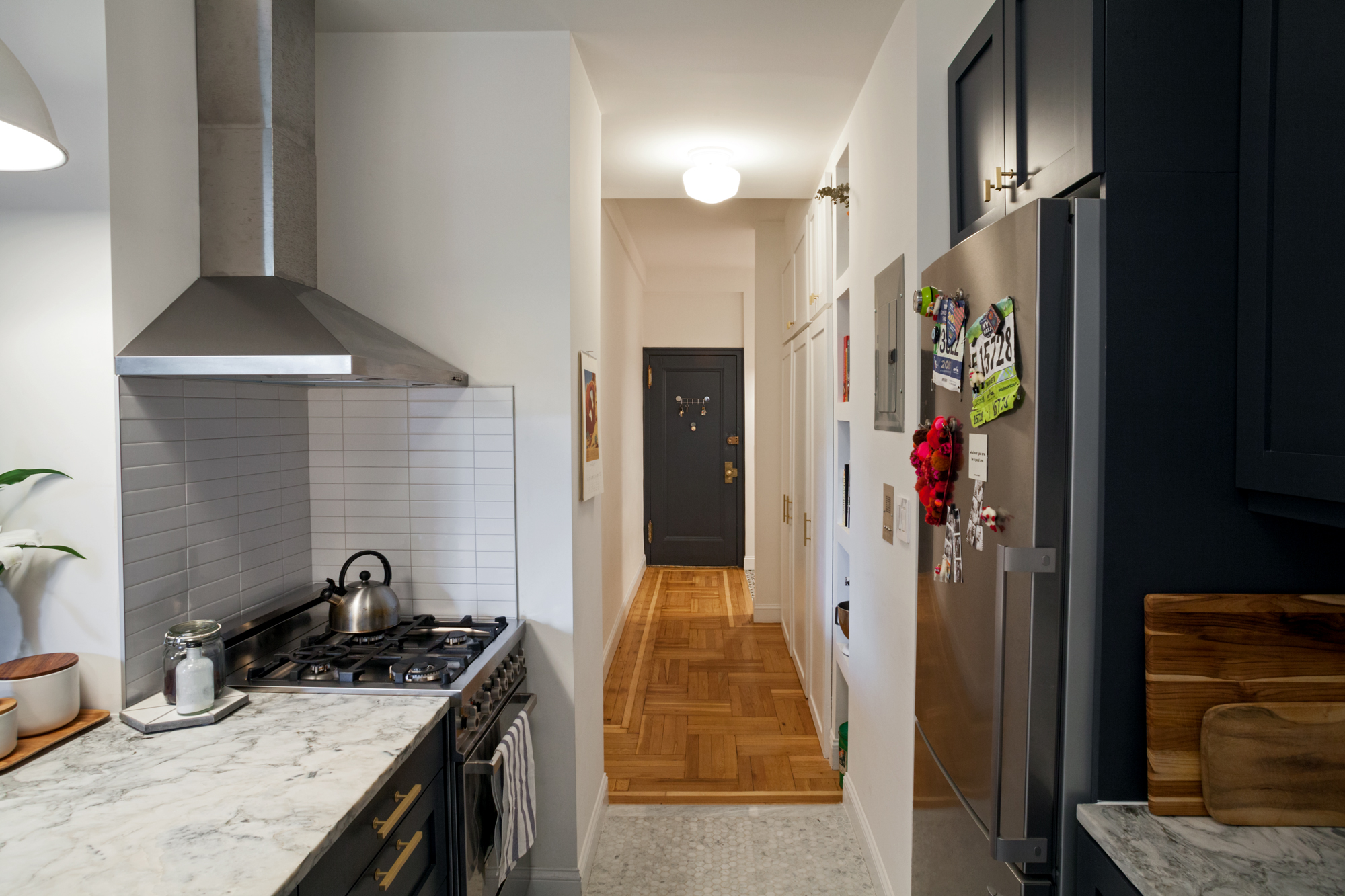


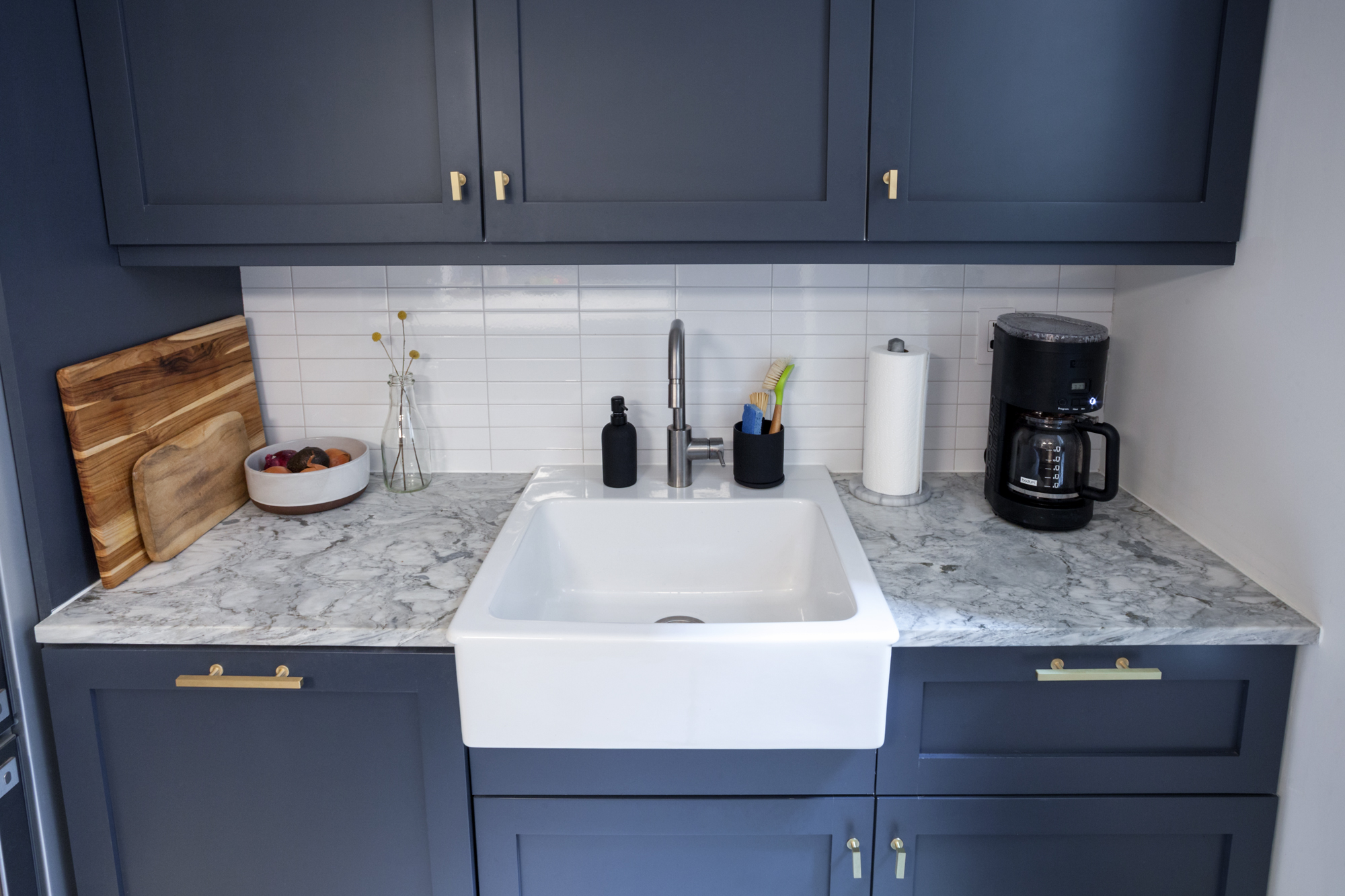 The kitchen island and counters are quartzite. It’s also used in the bathroom.
The kitchen island and counters are quartzite. It’s also used in the bathroom.


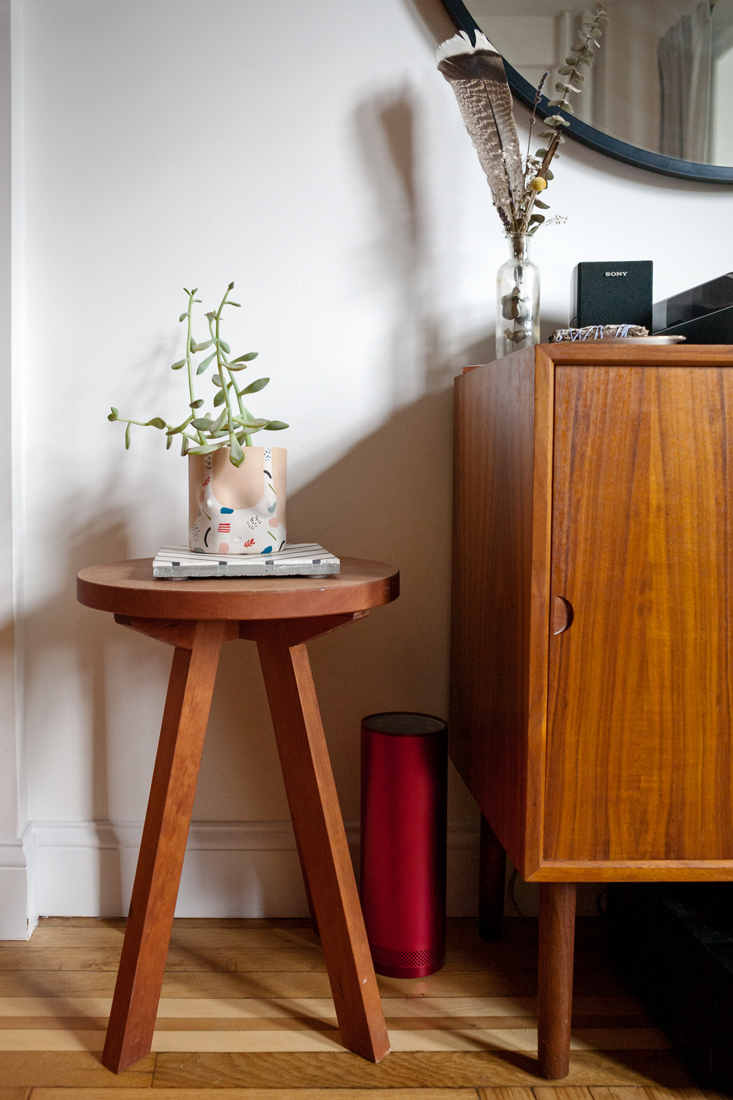 The wood floors are original; they just had them sanded and treated with a water-poly coating.
The wood floors are original; they just had them sanded and treated with a water-poly coating. 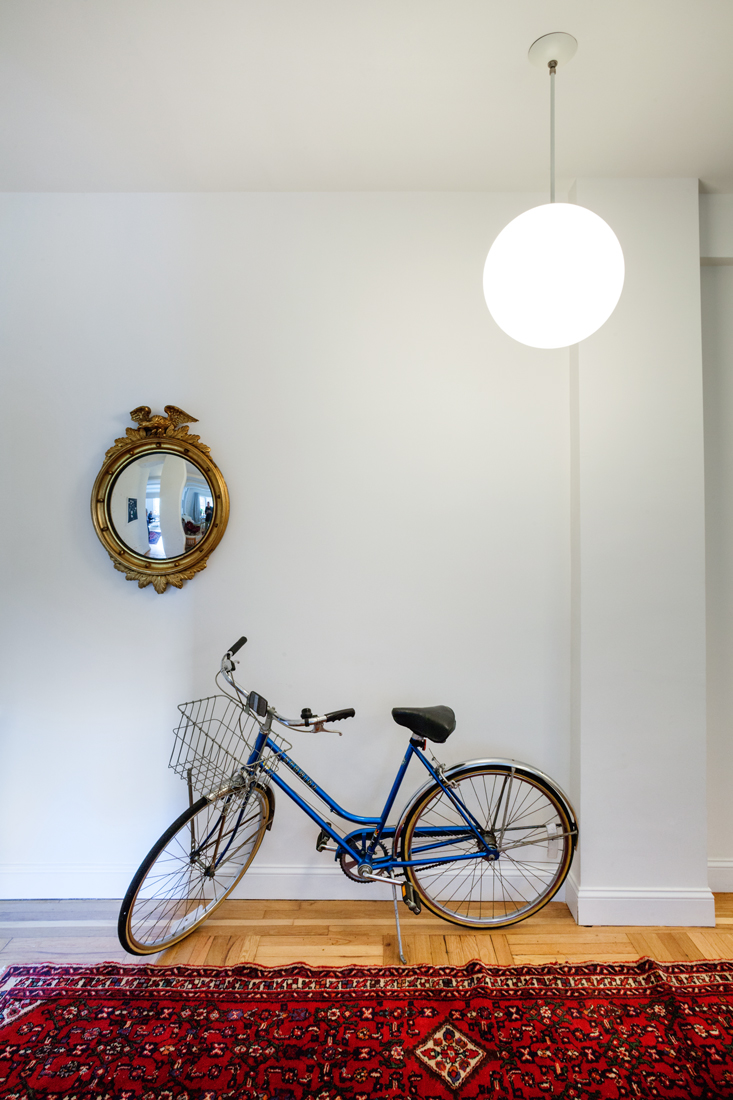 Amy and Brian closed on the apartment last June; the renovation was finished in October, and they moved in November.
Amy and Brian closed on the apartment last June; the renovation was finished in October, and they moved in November. The proposal chairs!
The proposal chairs!
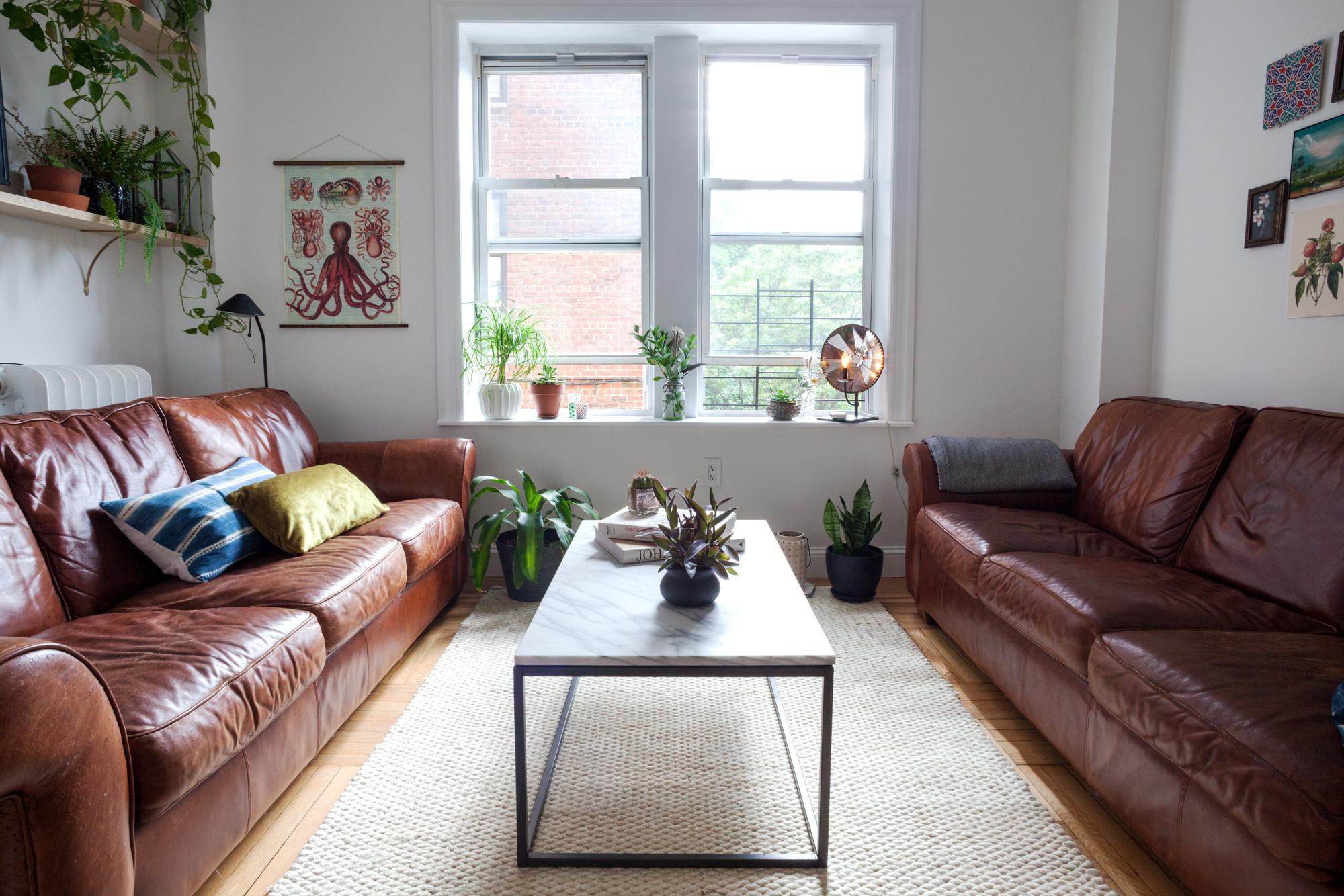
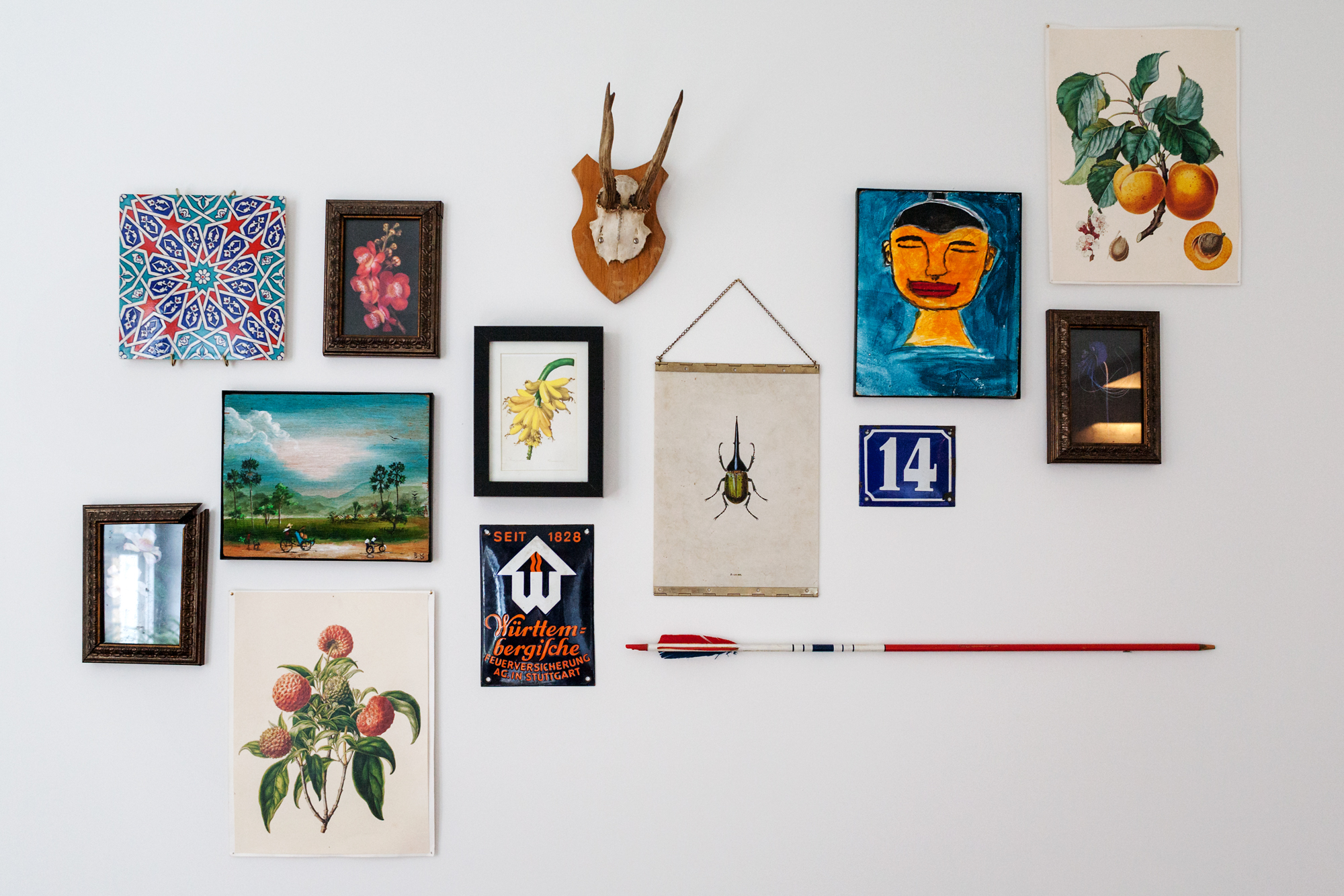






 Amy’s grandfather’s trunk sits in front of the bedroom window. “He immigrated to the U.S. with it from France and his initials are still painted on the side. I like seeing how weathered it is and imagining how far it’s traveled,” she told us previously.
Amy’s grandfather’s trunk sits in front of the bedroom window. “He immigrated to the U.S. with it from France and his initials are still painted on the side. I like seeing how weathered it is and imagining how far it’s traveled,” she told us previously. 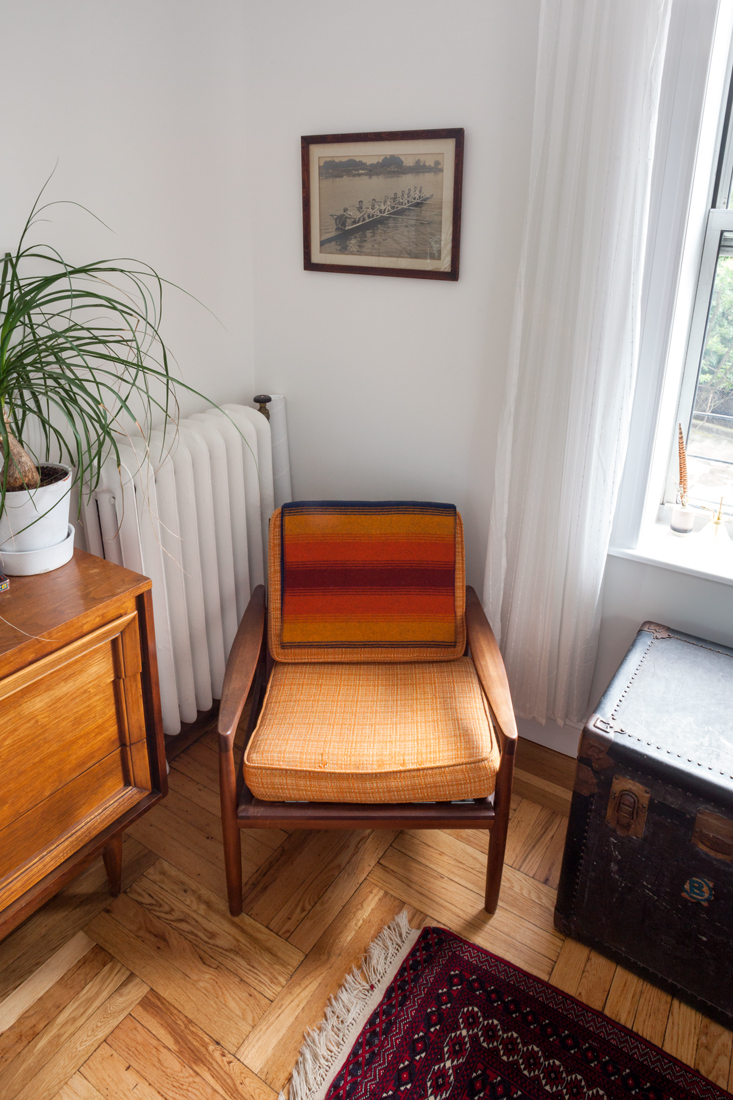



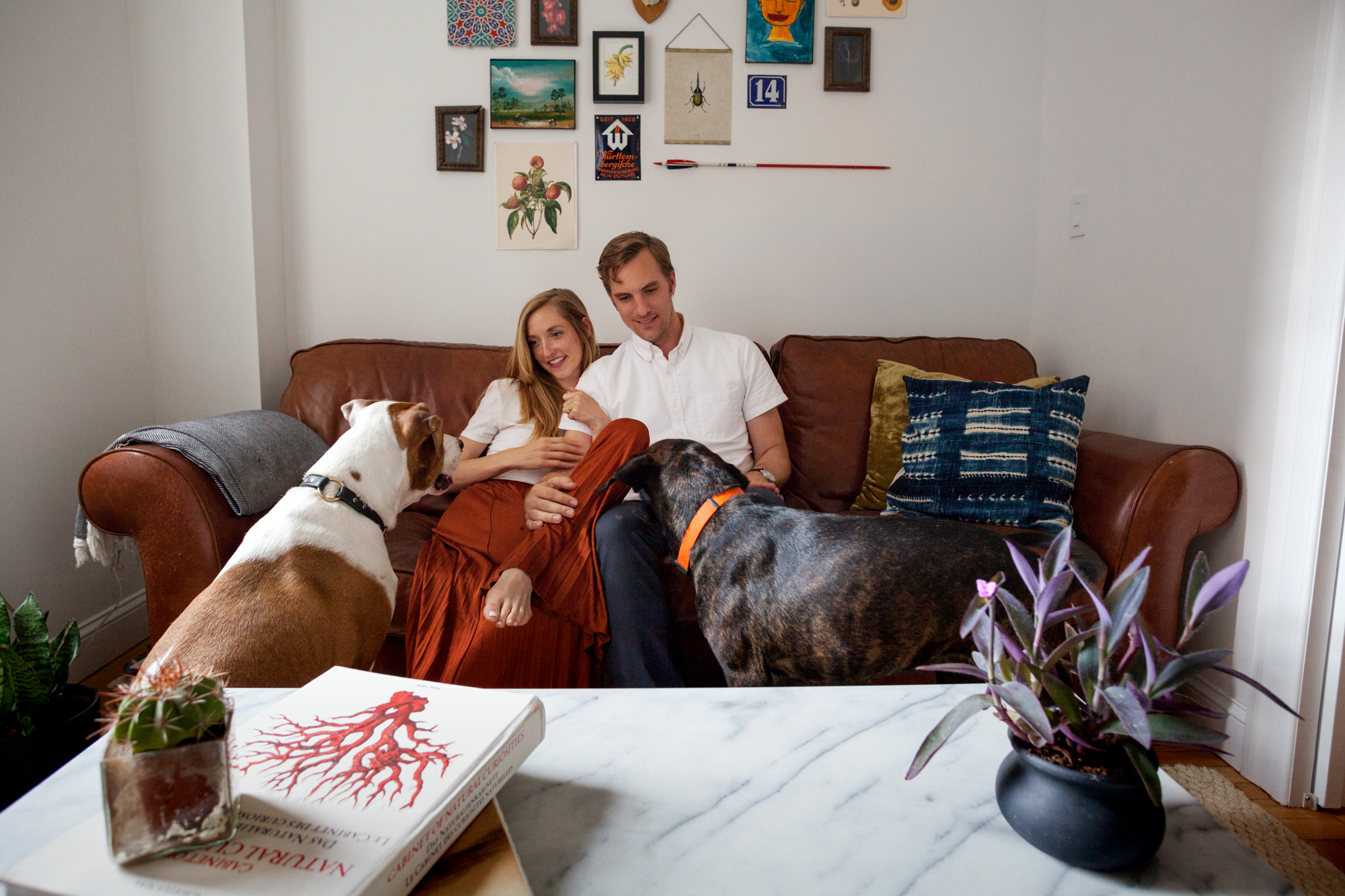















































































 Every facet of the home’s interior was meant to stand on its own as a piece of art. Mulitple cavernous entertaining areas include formal living spaces, lounges, a dining and bar area. A gourmet kitchen is separated from the living space by an undulant stainless steel sculpture wall.
Every facet of the home’s interior was meant to stand on its own as a piece of art. Mulitple cavernous entertaining areas include formal living spaces, lounges, a dining and bar area. A gourmet kitchen is separated from the living space by an undulant stainless steel sculpture wall.


























/cdn.vox-cdn.com/uploads/chorus_asset/file/11540055/Screen_Shot_2018_06_14_at_2.30.14_PM.png)
/cdn.vox-cdn.com/uploads/chorus_asset/file/11540065/Screen_Shot_2018_06_14_at_2.29.56_PM.png)
/cdn.vox-cdn.com/uploads/chorus_asset/file/11540063/Screen_Shot_2018_06_14_at_2.29.36_PM.png)
/cdn.vox-cdn.com/uploads/chorus_asset/file/11540069/Screen_Shot_2018_06_14_at_2.30.53_PM.png)





 Police are looking for the man who partially
Police are looking for the man who partially 

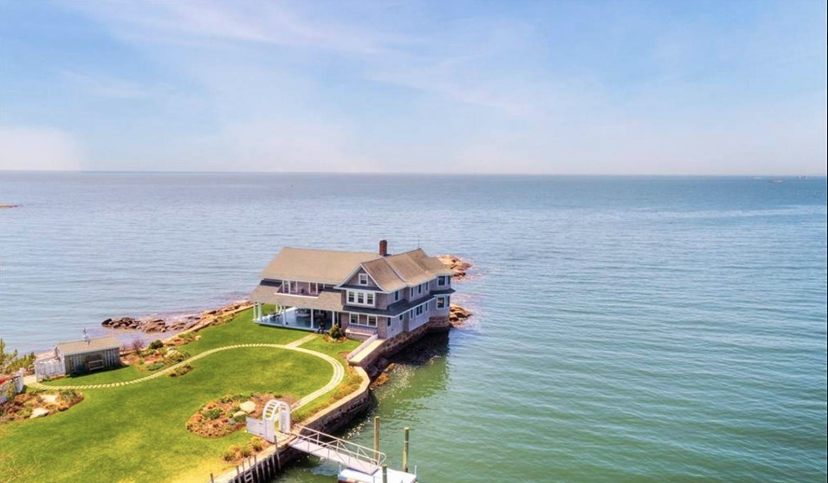













































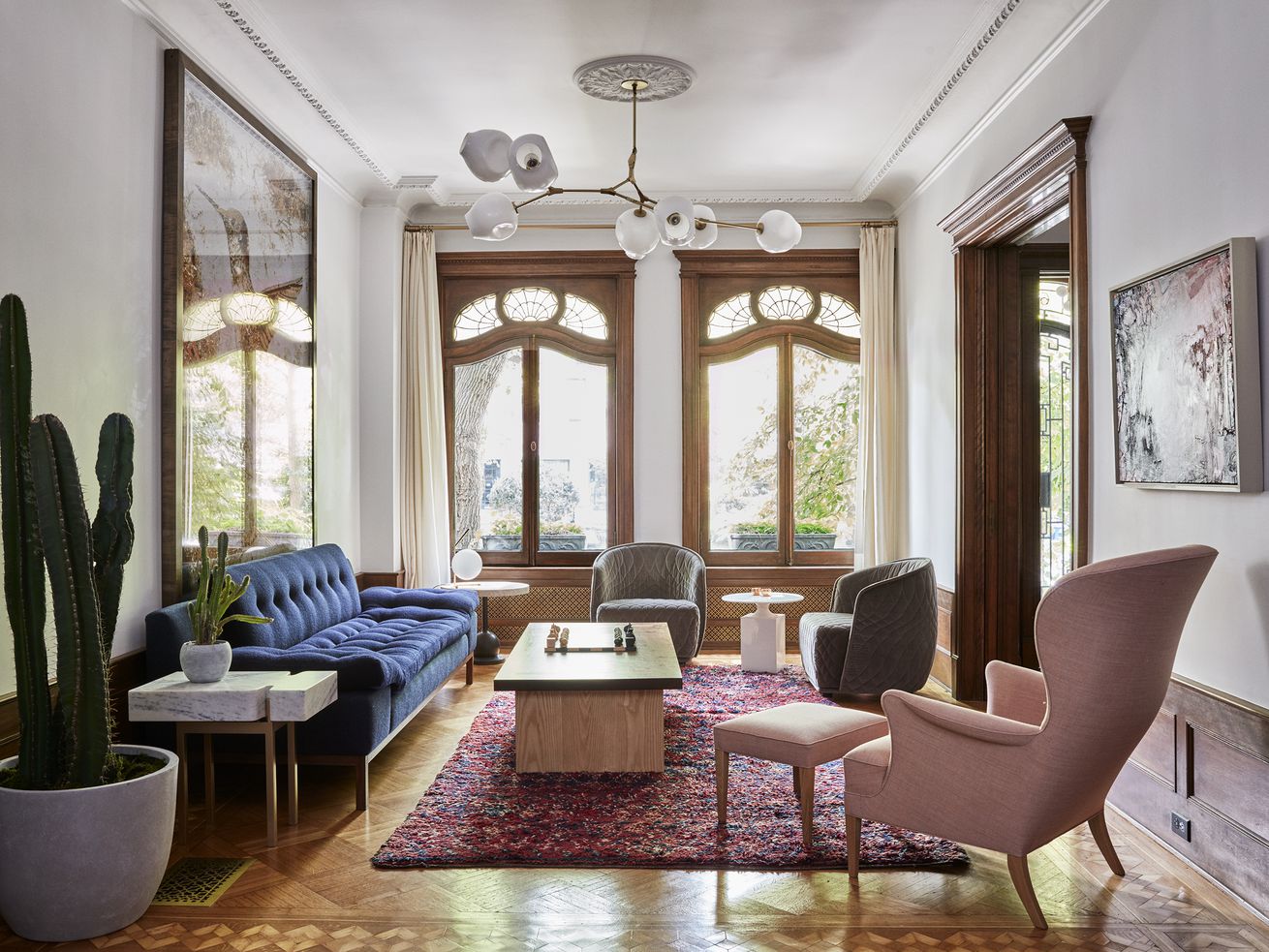
/cdn.vox-cdn.com/uploads/chorus_asset/file/10879411/House_Calls_Park_Slope_Jessica_Helgerson_Sturman_parlor.jpg)
/cdn.vox-cdn.com/uploads/chorus_asset/file/10879415/House_Calls_Park_Slope_Jessica_Helgerson_Sturman_exterior.jpg)
/cdn.vox-cdn.com/uploads/chorus_asset/file/10879527/House_Calls_Park_Slope_Jessica_Helgerson_Sturman_entry_.jpg)
/cdn.vox-cdn.com/uploads/chorus_asset/file/10879423/House_Calls_Park_Slope_Jessica_Helgerson_Sturman_library.jpg)
/cdn.vox-cdn.com/uploads/chorus_asset/file/10879395/House_Calls_Park_Slope_Jessica_Helgerson_Sturman_diningroom.jpg)
/cdn.vox-cdn.com/uploads/chorus_asset/file/10879407/House_Calls_Park_Slope_Jessica_Helgerson_Sturman_kitchen.jpg)
/cdn.vox-cdn.com/uploads/chorus_asset/file/10879403/House_Calls_Park_Slope_Jessica_Helgerson_Sturman_kitchen_1.jpg)
/cdn.vox-cdn.com/uploads/chorus_asset/file/10879425/House_Calls_Park_Slope_Jessica_Helgerson_Sturman_masterbedroom.jpg)
/cdn.vox-cdn.com/uploads/chorus_asset/file/10879455/House_Calls_Park_Slope_Jessica_Helgerson_Sturman__masterbath.jpg)
/cdn.vox-cdn.com/uploads/chorus_asset/file/10879509/House_Calls_Park_Slope_Jessica_Helgerson_Sturman_hall_.jpg)
/cdn.vox-cdn.com/uploads/chorus_asset/file/10879463/House_Calls_Park_Slope_Jessica_Helgerson_Sturman__childrensbedroom.jpg)
/cdn.vox-cdn.com/uploads/chorus_asset/file/10879431/House_Calls_Park_Slope_Jessica_Helgerson_Sturman__playroom.jpg)






















































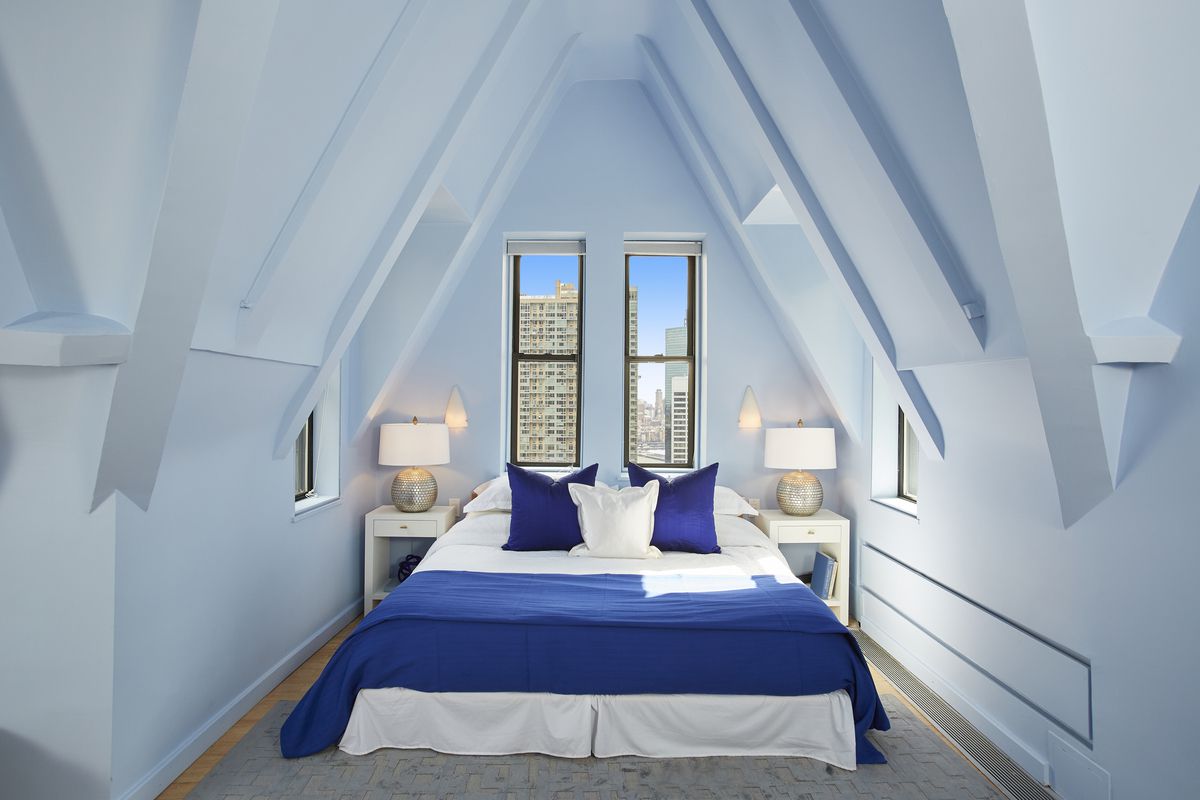














/cdn.vox-cdn.com/uploads/chorus_asset/file/10348135/DBOX_108LEONARD_Greatroom_11N.jpg)
/cdn.vox-cdn.com/uploads/chorus_asset/file/10348141/DBOX_108LEONARD_Greatroom_6P.jpg)
/cdn.vox-cdn.com/uploads/chorus_asset/file/10348147/DBOX_108LEONARD_GalleryKitchen_Plinth.jpg)
/cdn.vox-cdn.com/uploads/chorus_asset/file/10348161/DBOX_108LEONARD_GalleryKitchen_Waterfall.jpg)
/cdn.vox-cdn.com/uploads/chorus_asset/file/10348173/DBOX_108LEONARD_Bathroom_Master.jpg)
/cdn.vox-cdn.com/uploads/chorus_asset/file/10348189/DBOX_108LEONARD_Detail_Interior_Day2.jpg)
/cdn.vox-cdn.com/uploads/chorus_asset/file/10348177/DBOX_108LEONARD_Amenities_Rooftop_Dusk.jpg)
/cdn.vox-cdn.com/uploads/chorus_asset/file/10348179/DBOX_108LEONARD_Amenities_Rooftop_Day.jpg)
/cdn.vox-cdn.com/uploads/chorus_asset/file/10348175/DBOX_108LEONARD_Amenities_PrivateDining.jpg)
/cdn.vox-cdn.com/uploads/chorus_asset/file/10348169/DBOX_108LEONARD_Amenities_ChefKitchen1.jpg)
/cdn.vox-cdn.com/uploads/chorus_asset/file/10348171/DBOX_108LEONARD_Amenities_Pool.jpg)
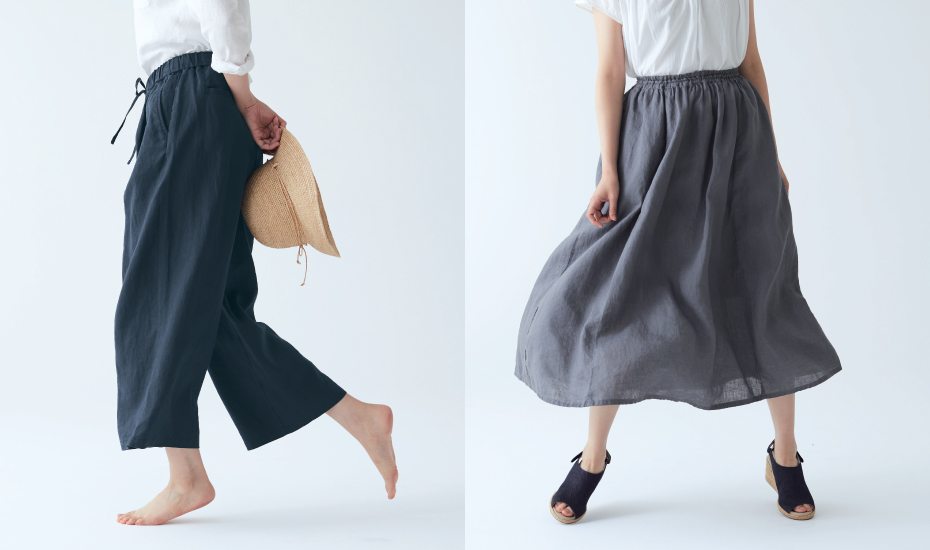

/cdn.vox-cdn.com/uploads/chorus_asset/file/10345729/308193349.jpg)
/cdn.vox-cdn.com/uploads/chorus_asset/file/10345727/308193390.jpg)
/cdn.vox-cdn.com/uploads/chorus_asset/file/10345733/308193522.jpg)
/cdn.vox-cdn.com/uploads/chorus_asset/file/10345731/308193485.jpg)
/cdn.vox-cdn.com/uploads/chorus_asset/file/10345751/308193308.jpg)
/cdn.vox-cdn.com/uploads/chorus_asset/file/10345749/308193263.jpg)
/cdn.vox-cdn.com/uploads/chorus_asset/file/10345759/308193603.jpg)
/cdn.vox-cdn.com/uploads/chorus_asset/file/10345757/308212596.jpg)
/cdn.vox-cdn.com/uploads/chorus_asset/file/10345769/308212542.jpg)
/cdn.vox-cdn.com/uploads/chorus_asset/file/10345771/308212649.jpg)
/cdn.vox-cdn.com/uploads/chorus_asset/file/10345741/4eed367c0021eea172109b3323796c6365b4cea6.jpg)











